Art of Mesopotamia
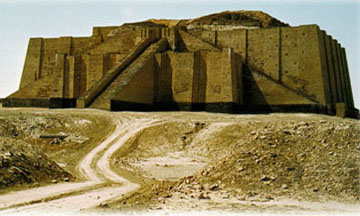
Ziggurat of Ur-Nammu
|
 Sumerian Votive Figures
Sumerian Votive Figures |
The
Sumerians
The Sumerians were the first
civilization to occupy the Tigris-Euphrates river valley called the
Mesopotamia (literally meaning "the land between two rivers").
Each of their separate city-states had its own ziggurat, which contained
governmental offices as well as a temple. The temple was located on
the highest platform (now eroded in the above example).
Since the Mesopotamia had
no geographical barriers, it was open to attack from other developing
civilizations. Thus, its history is one of continual invasions. With
each successive ruler, new artistic influences were absorbed.
|
|
The
Akkadians

|
|
The Akkadians
were the first group of invaders to overthrow the Sumerians. These two portraits
were probably of Akkadian rulers. They are cast in copper, demonstrating their
advanced technology. Note the naturalism of their features, combined with
the geometric stylization of their beards.
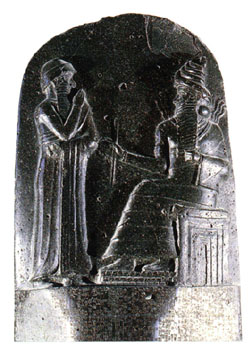 Stele of Hammurabi
Stele of Hammurabi |
The
Babylonians
Hammurabi
reigned Mesopotamia between 1792 and 1750 B.C.E. His code of laws was
probably the first written rule of conduct governing property rights,
financial transactions, and domestic matters.
At
the top of the stele, Hammurabi is shown, receiving divine inspiration
from the sun-god - who sits on his heavenly throne, with light rays
radiating off of his shoulders. Below this is a complex inscription
of laws. Its entire height is 7'4", though only the top portion
is pictured here.
|
The
Assyrians
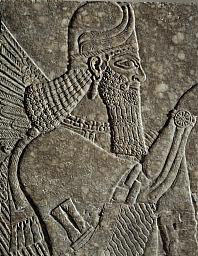
Winged Deity
|
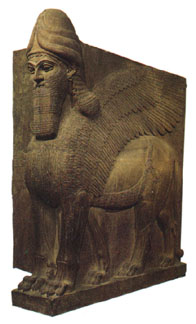 Human-Headed Winged Lion
Human-Headed Winged Lion |
When the Assyrians conquered the
Babylonians in the 9th century B.C.E., they erected citadels to protect their
temples and palaces from further invasions. On the huge stone walls were carvings
depiting winged deities, which was emblematic of the power of their king.
At the entrance to the citadel of Nimrud were a pair of winged bulls. The
face is believed to be a portrait of the king, Ashurnasirpal II. His cap indicates
his divine status. There is an interesting peculiarity about this statue:
They felt it was necessary that both front legs were visible on approaching
it, but also wanted it to appear as if it was walking when viewed from the
side. This problem permitted them to make a compromise by giving the creature
5 legs.
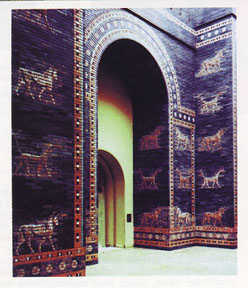
The Ishtar Gate, 575 B.C.E.
|
The
Neo-Babylonians
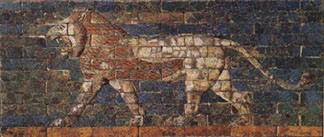
Walking Lion, from the Ishtar Gate, glazed brick, 6th c. B.C.E
|
Since the Babylonians had a second
reign of power, the newer kingdom is known as the Neo-Babylonian. Like the
Assyrians, the desire to to close out possible invaders prompted them to build
their own citadel. The Ishtar gate was used to impress visitors as well as
protect the city. The glazed ceramic animals are majestic, and were probably
meant as spirit-guardians.
Next: Ancient Egypt
|